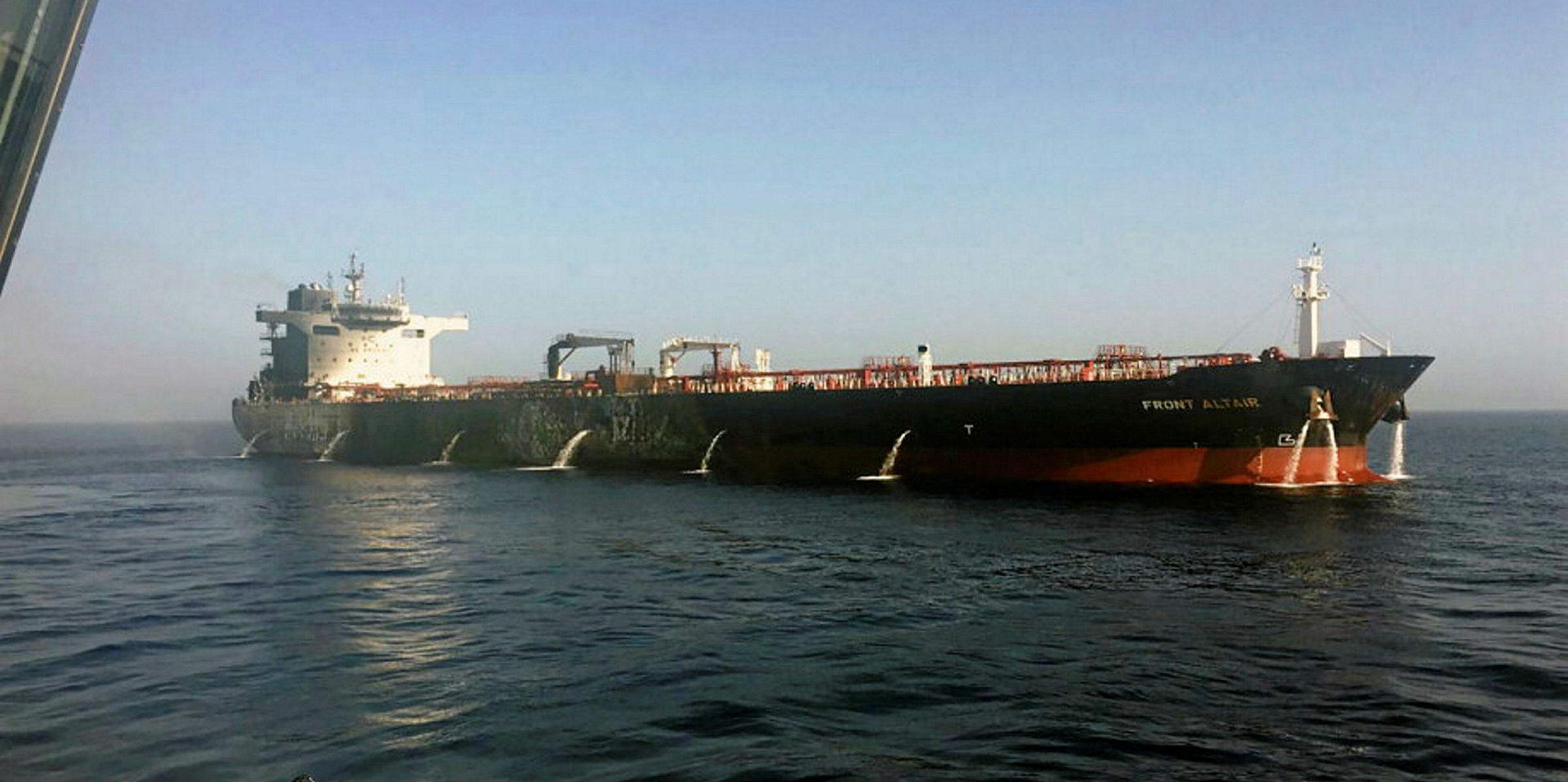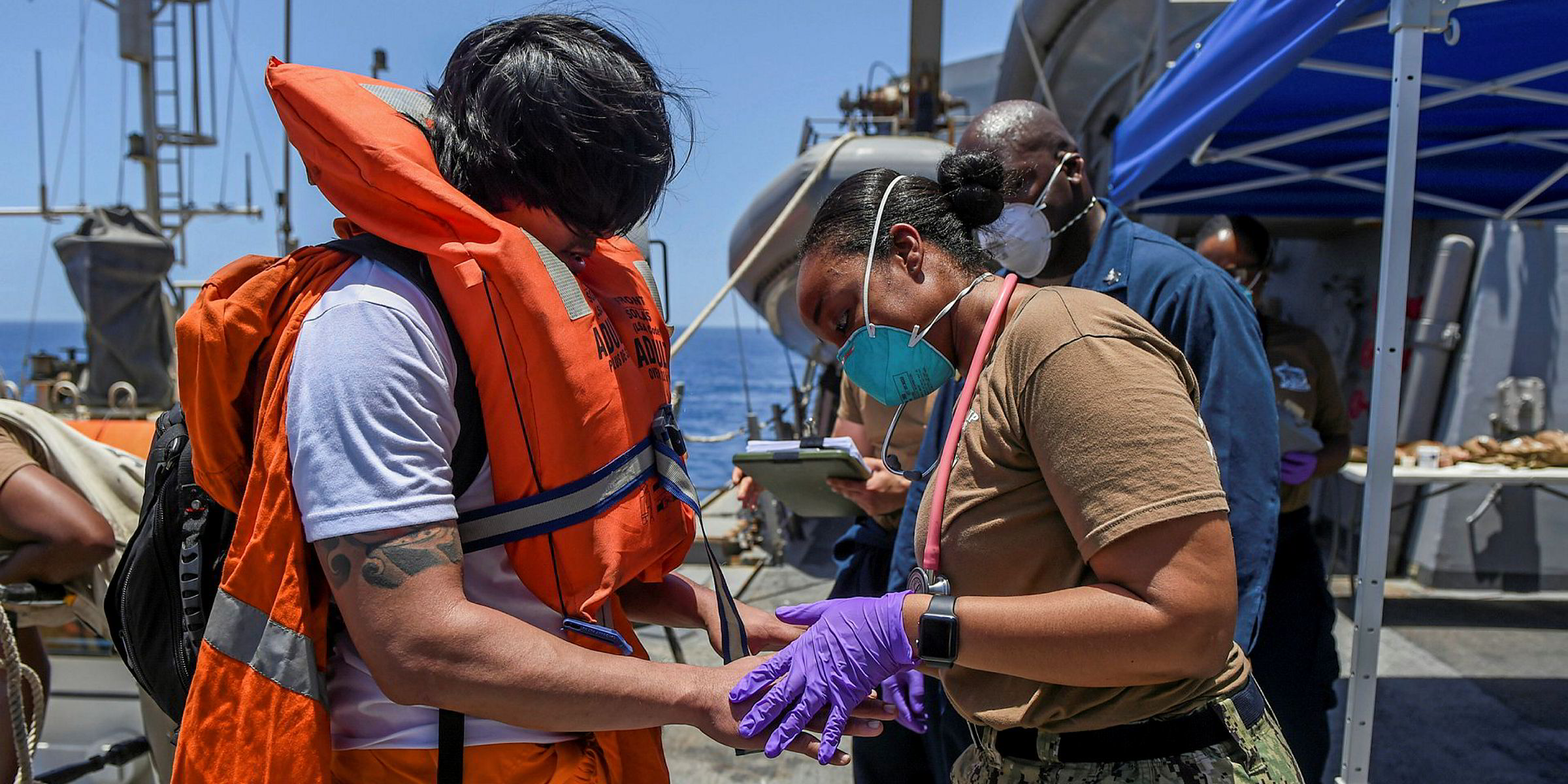Middle Eastern tanker markets are slowly returning to life, with spot VLCCs fixed at higher rates than the level seen before last Thursday’s attacks.
According to Bloomberg data, five VLCCs have been fixed this week to lift from Middle East Gulf in late June or early July for voyages to East Asia, including four under provisional booking and one via a contract of affreightment.
The highest rate among the fixtures was achieved by the MOL-owned, 308,000-dwt Kasagisan (built 2006), which was booked by Taiwan CPC to load 270,000 tonnes of crude between 1-3 July for shipment to Taiwan at Worldscale 46.
The rate was lower than shipowners’ offers earlier this week at WS 60s. However, a similar fixture for the 319,100-dwt Athenian Freedom (built 2013) was done at WS 37 on 13 June.
Emails seeking comments from MOL and CPC are yet to be answered.
Market players have attributed the latest rally to higher insurance and bunker costs, as well as lower vessel supply amid many owners’ efforts in limiting exposure to Middle Eastern trade.
“We expect that until the sense of security is fully restored in the region, trading parties will remain reluctant to resume their business at the usual pace,” shipbroker Intermodal said.
On a timecharter-equivalent basis, Clarksons Platou assessed spot VLCC earnings at $24,600 per day as of Wednesday, up 81.2% week-on-week.
“Plenty of June cargoes should remain,” said Arctic Securities. “With owners more hesitant to take tonnage into the area, something needs to give.”
As for the suezmax market, brokers reported seven vessels have been firmly or tentatively fixed to lift from Middle East over the past week for various discharge locations, with rates generally WS 10-WS 20 points higher than the pre-attack levels.
However, the market sentiment has softened amid lacklustre supply-demand fundamentals.
“I don’t think it (the rate spike) will last long. We have been calling it off for the past few days as [there are] plenty of ships,” a broker said.
“But the market has been quiet and not tested much.”
BRS tanker analyst Felipe Loachamin also reckoned the boost to earnings would be short-term in nature, with slow crude demand from Asia amid weak refining margins and periodic maintenance. A more sustainable recovery may emerge in late summer when refineries start to prepare for the IMO 2020, he added.
Weak product tankers
As for clean tankers, Bloomberg data shows three LR1s and two LR2s have been fixed this week to load from Middle East in late June, of them for voyages to East Asia and one to East Africa.
Sovcomflot, earlier said to be avoiding Middle Eastern business, fixed the 74,600-dwt SCF Plymouth (built 2011) to Marubeni for a naphtha shipment to Japan at WS 115.
The Russian carrier does not comment on chartering matters. TradeWinds has sought comments from Marubeni.
In terms freight rates and TCEs, LR trades have only shown minor improvements in the Middle East, however.
According to Clarksons Platou, LR2 earnings were at $17,400 per day and LR1s at $16,000 per day as of Wednesday, up 4.4% and 4.6% from the week-ago levels, respectively.
“There is not much cargo out to be fixed for LRs,” Loachamin said.







